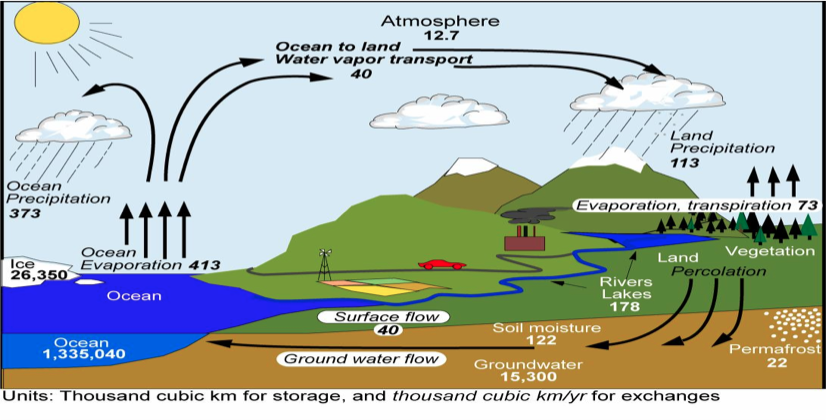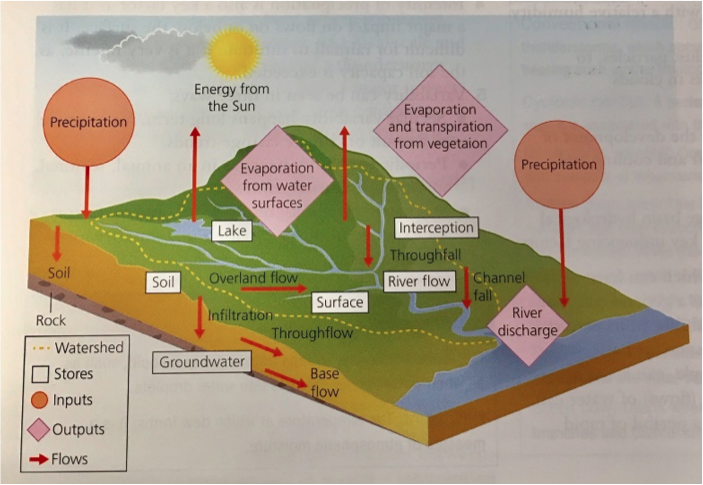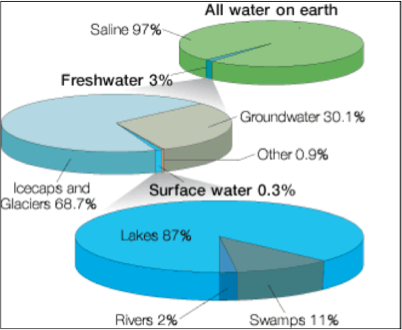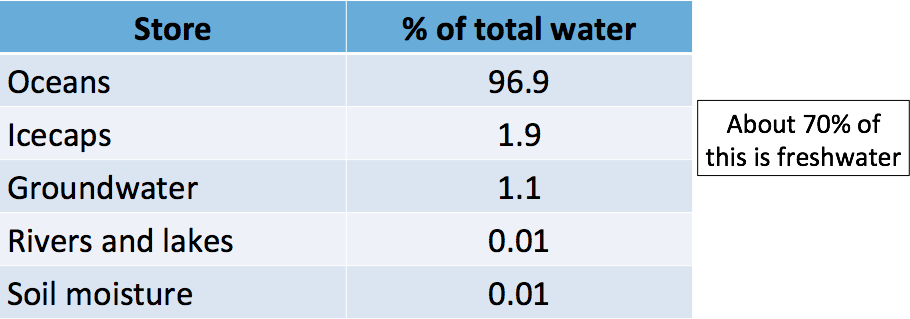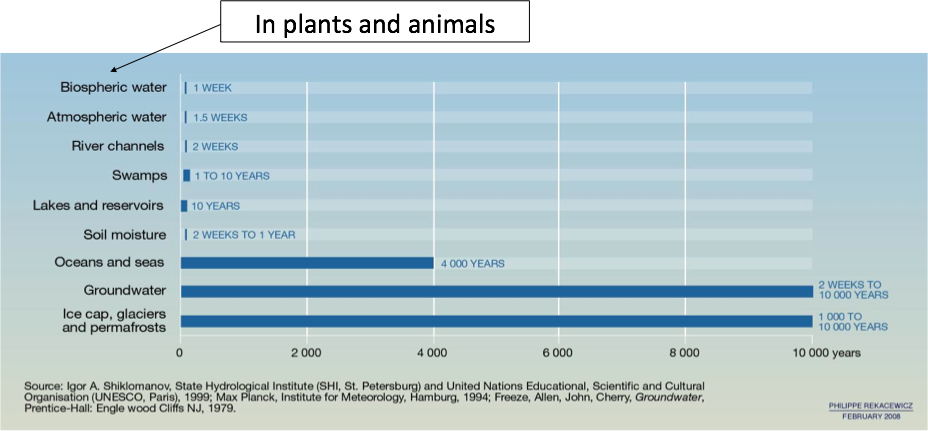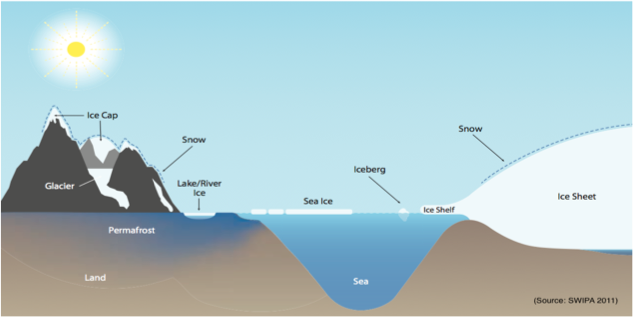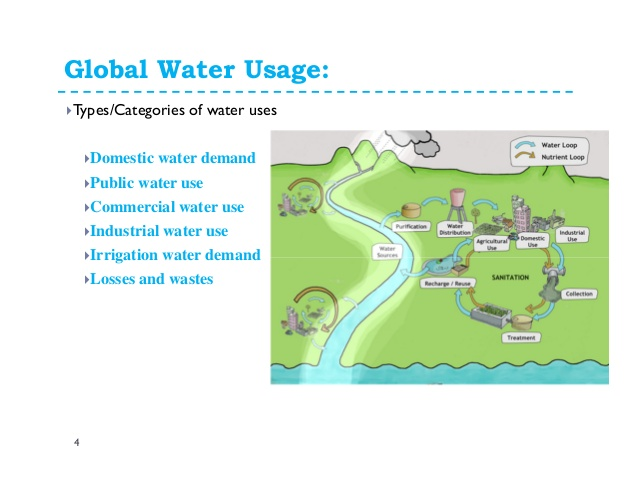The Global Hydrological Cycle
Water Cycle
The global hydrological cycle is a closed system made up of a series of processes.
- No external inputs so the volume of water is finite and constant.
- no water is new water.
The relative importance and size (percentage contribution) of the water stores annually fluxes between atmosphere, ocean and land.
The global water budget limits water available for human use and water stores have different __residence times __(time spent in that store); some stores are non-renewable.
- Cryosphere: areas of the Earth where water is frozen into snow or ice.
- Fluxes: the __rate of flow __between the stores.
- Residence time: the average__ time__ a water molecule will spend in a store. (It is more susceptible to pollution if it is in situ for a longer period of time.)
- Explain how the hydrological system is a closed system.
- Your answer should include: Never changes / processes.
Inputs Outputs Processes
Inputs - precipitation
Outputs - river discharge, evaporation from water surfaces, evapotranpiration
Flows - overland flow, channel flow, through flow, base flow, infiltration
Stores - interception, river flow, surface, soil, lake
- Describe the inputs outputs and processes in the system.
- Your answer should include: Precipitation / evaporation.
Energy Drive
It is driven by SOLAR ENERGY.
GRAVITATIONAL POTENTIAL ENERGY turns into kinetic energy to allow the water to move on the SURFACE.
The ITCZ (InterTropic Convergence Zone) is when intense solar radiation fuels the convection of warm humid air, resulting in condensation and precipitation (convectional precipitation). Known by sailors as the doldrums, it is the area encircling the earth near the equator where the northeast and southeast trade winds come together.
- The ITCZ is a zone of convergence at the thermal equator where the trade winds meet.
- It is a low pressure belt and migrates with the changing position of the thermal equator.
- The thermal equator receives the most intense heat from the Sun.
- Around 20th June each year the Sun is overhead at 23½º North, the Tropic of Cancer.
- Around 20th December the Sun is overhead at 23½º South, the Tropic of Capricorn.
- The movement of the thermal equator shifts the belts of planetary winds and pressure systems to the north and to the south annually.
- Explain how water stores change over time.
- Your answer should include: Seasons / ice age / freshwater / cryosphere.
Global Water Budget
This is the balance between the inputs and outputs of the global hydrological system.
Water Stores
In the last I__ce Age__ more water was in solid form, meaning sea levels were over __140 __metres lower than they are today.
Recent climate warming means there is less ice and higher sea levels.
Blue water: water stored in lakes, rivers, streams and groundwater in liquid form (the visible part of the hydrological cycle).
Green water: water stored in the soil and vegetation, (the invisible part of the hydrological cycle).
